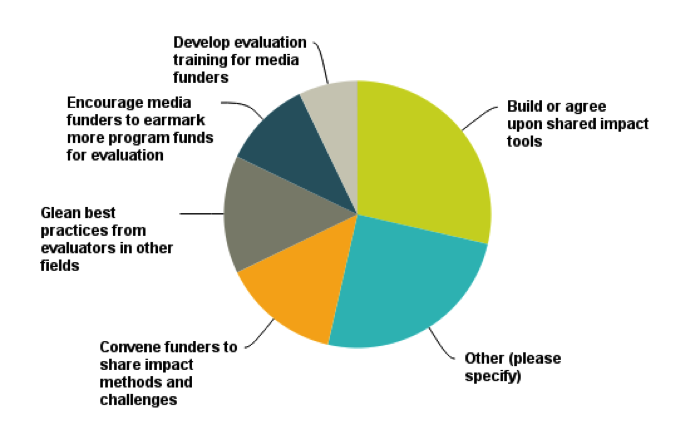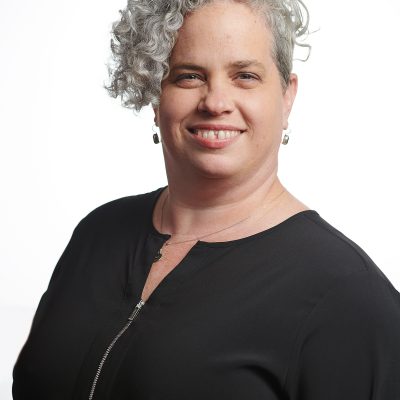
PARK CITY, Utah — When media funders talk about impact, what do they mean, and how do they demonstrate it? At the Sundance Film Festival, Media Impact Funders (MIF) released a new report, Funder Perspectives: Assessing Media Investments. It explores the multiple and sometimes overlapping lenses through which grantmakers view media evaluation, and confirms that there are still many unanswered questions.
The report contributes to a growing dialogue about ways to quantify and qualify the impact of public interest media. Such examinations have stimulated debate among both funders and grantees.
Calls for the creation of a single media impact metric or tool have been met with both curiosity and skepticism. Those in favor of impact analysis cite its strategic usefulness in this moment of myriad new and untested media platforms, the importance of concretely tying mission to outcomes, and the need to justify media investments rather than programmatic ones. Detractors raise concerns about how an excess of evaluation might stifle creativity, needlessly limit funding to those projects whose short-term impact can be conclusively proven, or simply bog grantees down in administrative tasks that require entirely different skills, as well as resources.
However, these debates have taken place in somewhat of an information vacuum. To date, the conversation about media impact has been led by a limited group of foundations. Little substantive information is available about how a broader range of funders address questions of evaluation. This research project aims to help fill that gap.
Combining survey responses from 30 foundations large and small with in-depth interviews of selected leaders, the report shows that the field of media impact assessment is still coalescing.
Many of the largest funders in the field participated, including the Bill & Melinda Gates Foundation, William and Flora Hewlett Foundation, John S. and James L. Knight Foundation, John D. and Catherine T. MacArthur Foundation, Skoll Foundation, and Wyncote Foundation, as well as several smaller regional and family foundations. But while all of the respondents are investing in reporting, production, or outreach campaigns, only 10 percent of those surveyed say that they primarily identify as media funders.
Just 23% of respondents make grants in a dedicated media program, with others reporting that they fund media through other program areas (33%), through a combination of media-specific and other program areas (27%) or other options outside of these choices, including partnerships and general programs.
For many, a focus on achieving other program goals, such as improving local drop-out rates or shedding a light on the causes of chronic disease, therefore shapes their stance on the outcomes they seek from media makers.
No silver bullet
The media projects that these foundations support address many issues. Standout topics include education (47%), health (40%), and environment (37%). Labor, science, and technology come next (at 10% apiece), while housing (7%) and crisis response (3%) fall to the bottom of the list.
Their investments also connect with audiences in different ways: Journalism (63%),
public media (50%) and documentary (47%) are the most commonly funded genres, with many funders investing in multiple genres. Engagement campaigns are also popular (41%). Feature films (13%) and games (10%) round out the list.
Here’s how respondents’ funding breaks down by platform:

These disparate approaches have complicated efforts to create universally shared impact analysis frameworks. Survey results indicated that the two biggest challenges facing this field are lack of consensus about what constitutes “impact” (33%) and lack of clarity about methods/measures within the media field (30%).
Plus, as it turns out, evaluation isn’t for everyone. While a few foundations have oriented their entire focus around achieving just a few key goals, others downplay the question of outcomes, preferring instead to invest in supporting creativity or independent production.
Next steps

Rather than a weakness, however, this may prove to be a strength. A diversity of approaches allows for small groups of like-minded funders and grantees to develop and test methodologies specific to their shared goals. Rather than a single tool or approach, the field may end up with a suite of relevant methods to be applied in various instances.
The funders we spoke with clearly seek to learn from and share best practices with one another. They are eager to establish comparable analysis rubrics within more specific fields of production, such as interactive documentary or nonprofit news, and to more frequently compare notes with one another on how impact relates to capacity building, collaboration, and media ecosystems.
In the coming months, MIF will be gathering funders who share an interest in particular program topics or production types for small-group discussions about how best to craft approaches that better match their grantees’ goals.
We welcome questions and feedback on the report, and suggestions for related conversations. Please contact MIF Research Director Jessica Clark to follow up.
